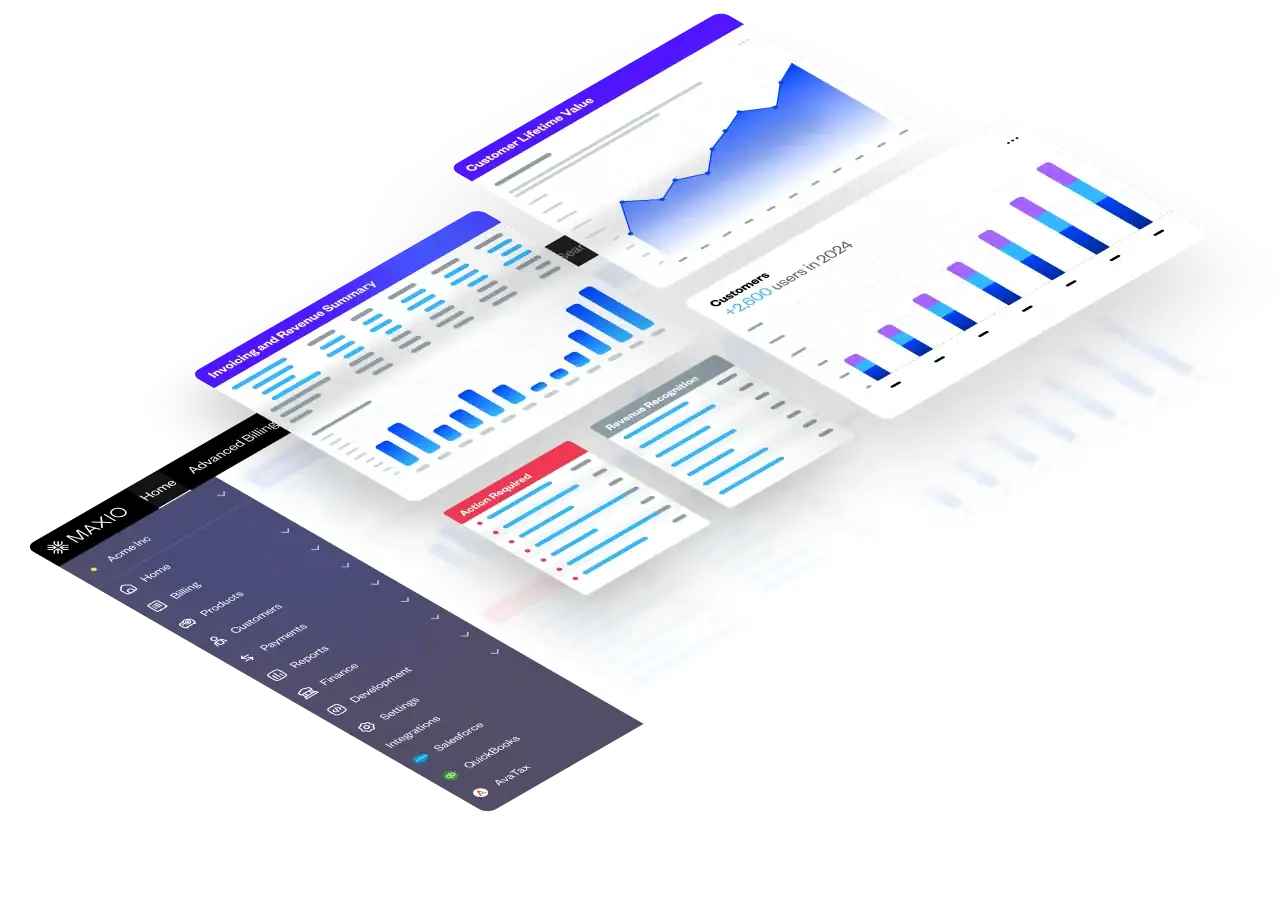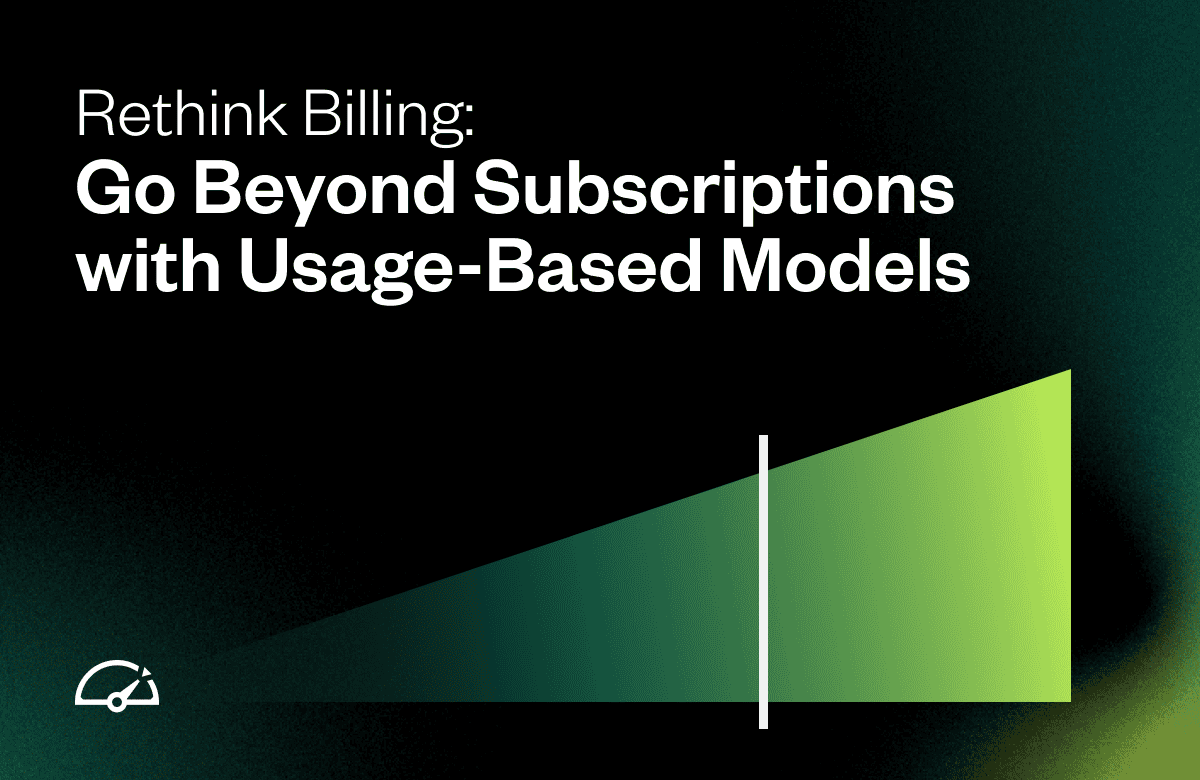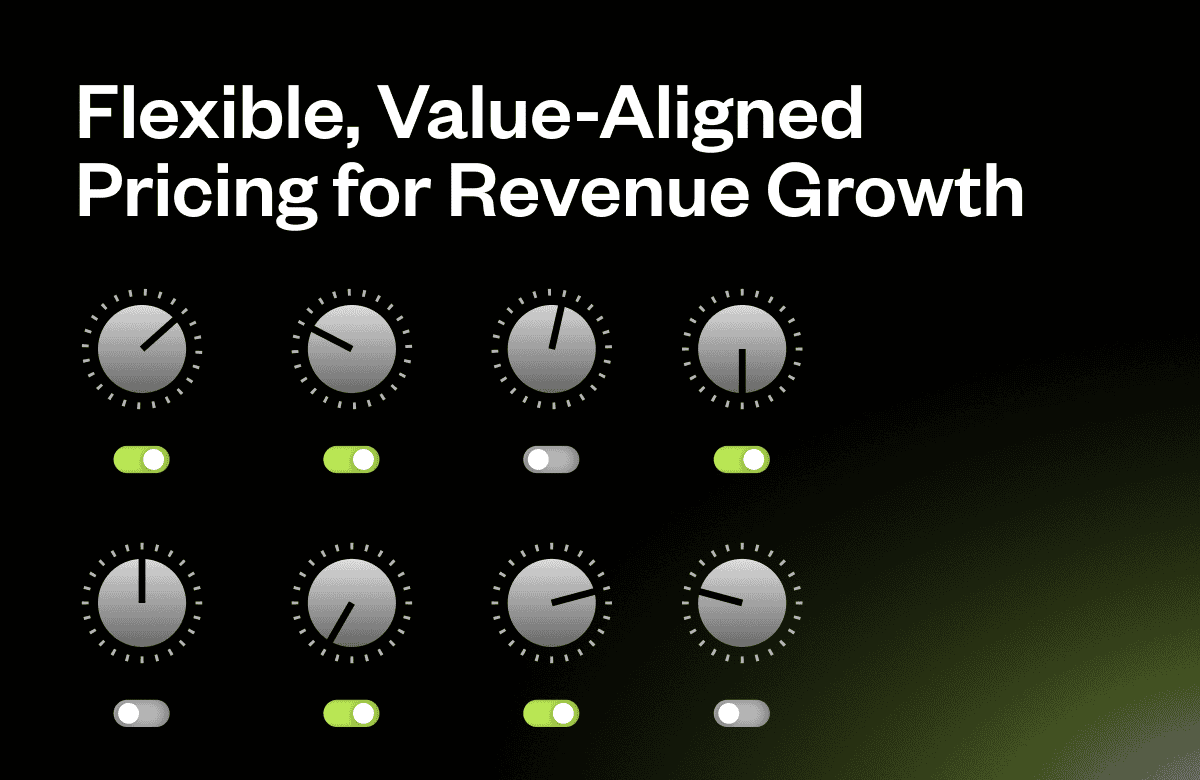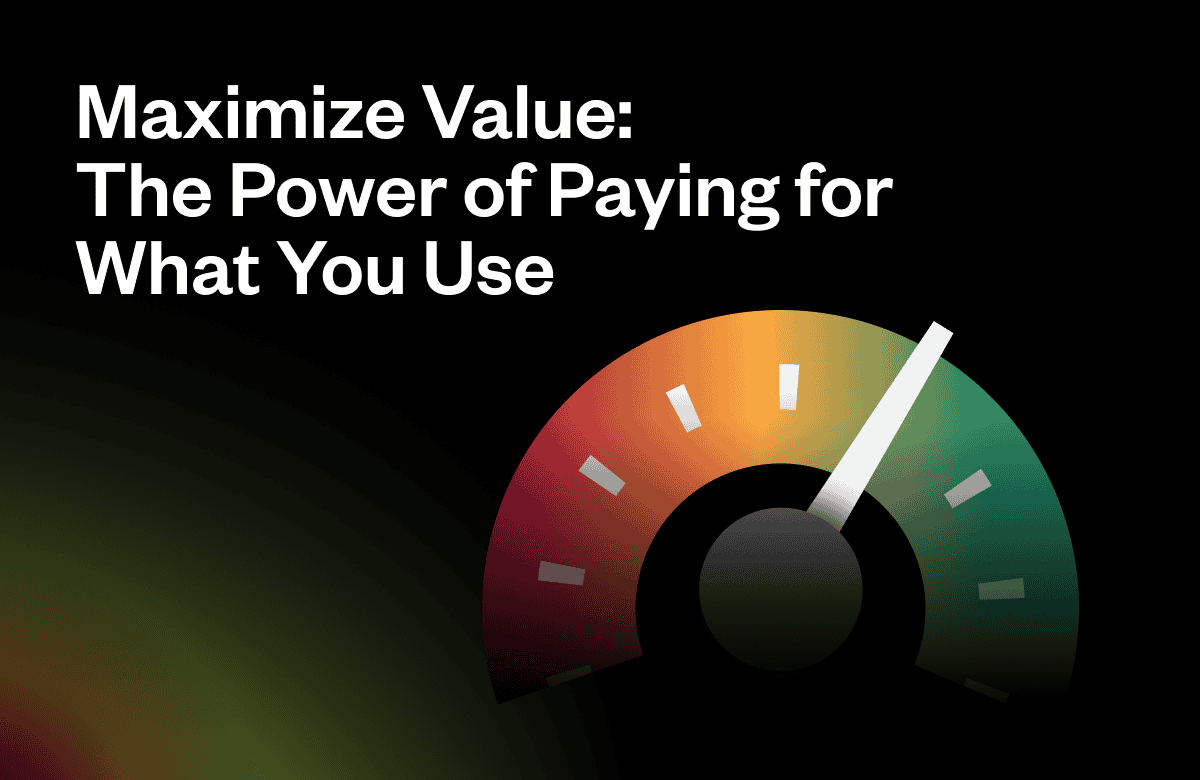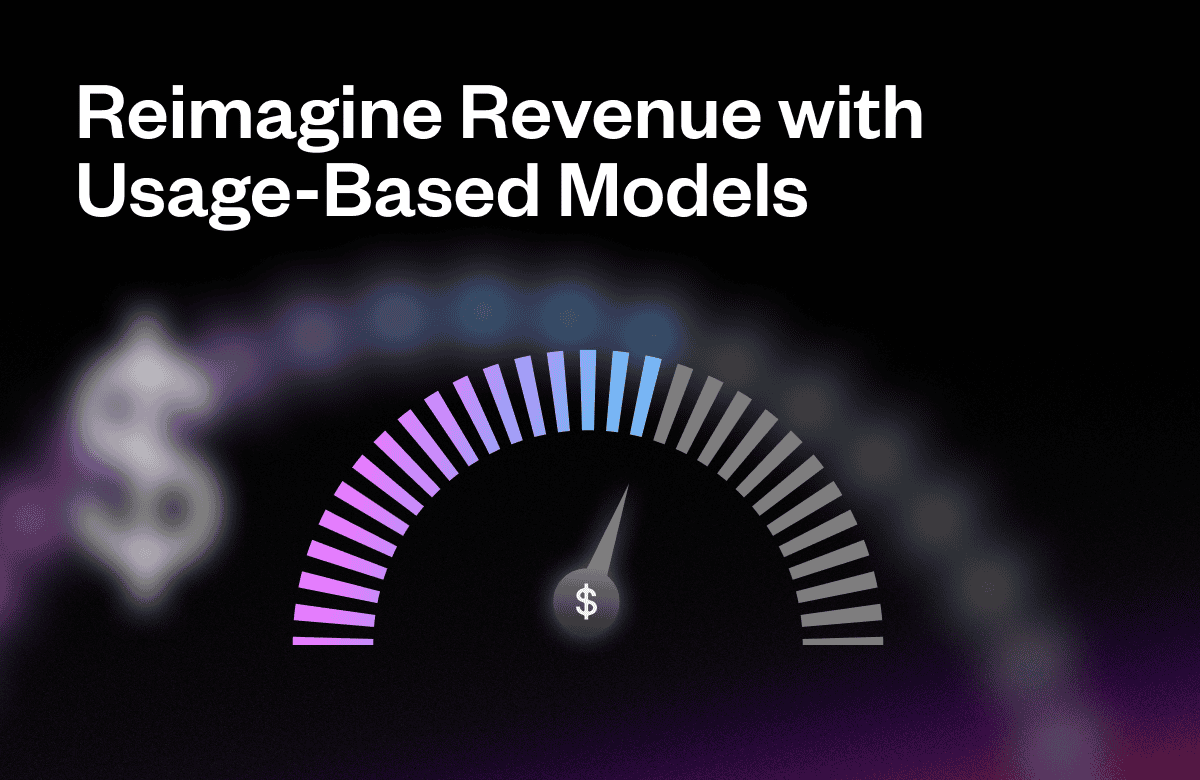What do dental floss, meal kits, and software have in common? They can all be purchased on a subscription basis.
But as products have evolved, traditional subscription billing cycles don’t always fit. Enter usage-based billing (UBB): a pricing model that charges based on actual consumption rather than a flat fee. This isn’t to be confused with usage-based pricing, which has variable rates. With usage-based billing, the pricing structure stays the same while the billing amount fluctuates based on usage.
And as these chase consumption-based pricing models continue to become the norm, automated recurring billing solutions (like our very own Maxio) are helping companies implement usage-based billing and capture the full value of their SaaS.
Curious if UBB makes sense for your business? Here’s everything you need to know about this billing model, including its benefits, challenges, and what tools you need to get it up and running.
Understanding usage-based billing in SaaS
Usage-based billing charges customers based on how much they actually use an app or service, whereas variable usage-based pricing models set rates according to usage metrics (e.g. API calls, cloud storage usage, number of active users).
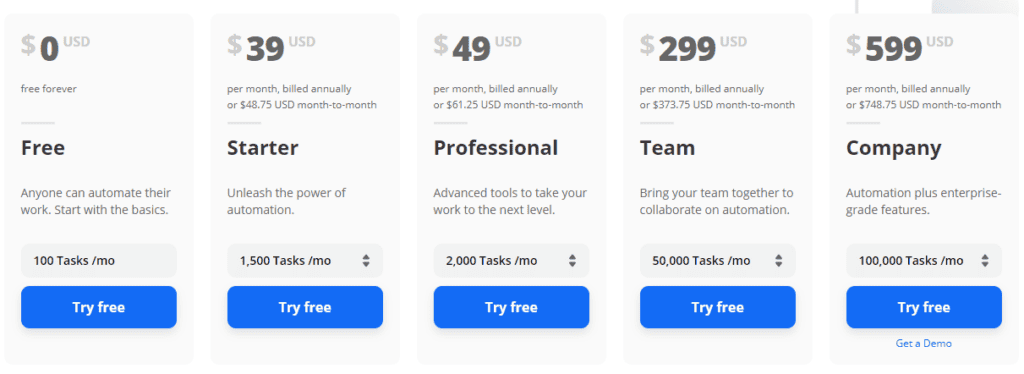
A pricing table that showcases the different tiers of pricing based on usage, as an example for Saas companies looking to understand usage-based pricing and how to implement it (Source)
This brings several advantages for SaaS providers. For starters, they can match their revenue growth to their customers’ growth in adoption, tying the growth in fees to the growth in value seen by their customers’, making for an incredibly transparent and fair business model. Giving customers the ability to ramp and pay as they go as opposed to paying for a subscription up-front can be a much lower-friction sale in most industries. While this does introduce some up-front risk to the provider, the long-term payoff of near-certainty in existing customer revenue expansion is an incredibly attractive business model. Also, moving to UBB requires providers to be incredibly smart when it comes to how their customers are using the product, due to the need for constant evaluation of usage data, which can pay long-term dividends in both product and GTM optimization.
Benefits of usage-based billing
Usage-based billing flips the script on traditional pricing by ensuring that your customers pay only for what they actually use. It’s flexible, fair, and future-proof—driving growth while keeping your customers happy and engaged with every transaction.
But is switching to a UBB model worth the effort? You can decide that for yourself. Here are some of the benefits of adopting usage-based billing.
Billing flexibility
One of the most significant advantages of adopting a usage-based pricing model is its inherent flexibility.
Unlike traditional, static pricing models, this approach allows businesses to charge customers based on real-time customer usage, creating a more tailored customer experience. By using value metrics—such as storage, bandwidth, or transactions—SaaS companies can craft personalized billing cycles that adapt to their customer needs and usage patterns.
For example, at Maxio, we’ve designed our usage-based billing features so that customers can automatically collect usage data, calculate line items, and send accurate invoices with zero manual work needed. Even better, Maxio’s subscription billing platform make it easy to mix-and-match different pricing and subscription models to accommodate your unique go-to-market (GTM) strategy.
This flexibility means you can easily add-on tiered pricing structures and adjust for fluctuations in customer usage, ensuring your users only pay for the exact functionality they need without any upfront commitment.
Revenue growth opportunities
Usage-based billing also opens up new channels for revenue growth in your business. For example, as your customers’ needs fluctuate, you can capture additional revenue through overages and upsell opportunities. And while we don’t encourage you to exploit this aspect of UBB, a well-integrated billing system can automatically charge customers for overage usage, or notify them of impending overages, when they surpass or come near the limits of their current pricing plan.
This model not only encourages higher usage commitments (thus, higher revenue) but also provides a clear path for upselling customers to higher tiers as their usage grows over time.
Increased customer satisfaction
If you improve your customer satisfaction scores (CSAT) you can reduce churn and increase customer retention—usage-based billing helps with all three.
This is because when customers pay solely for what they use, they feel a stronger alignment between their investment and the actual value they receive, which improves customer experience and fosters trust in your product and brand. OpenView, an expansion-stage venture capital firm, has even attributed usage-based billing to superior CAC payback and net dollar retention rates among growing SaaS companies.

Graph showing customer retention rates and revenue growth over time (Source)
Challenges of usage-based billing
While usage-based billing can open up new revenue streams for SaaS companies, it’s not without its challenges. Adopting this model means you’ll need to carefully take your product-market fit, revenue forecasts, and compliance with regulatory standards in consideration first.
Let’s explore some of the potential pitfalls of UBB and how you can address them to make usage-based billing work for you.
Pricing model compatibility
Not every SaaS product is ideally suited for usage-based billing.
For instance, products with static feature sets or those designed for flat-rate service delivery may not align well with fluctuating usage charges. SaaS pricing models that rely on tiered access levels, with fixed benefits for each plan, often lack the flexibility needed for usage-based billing.
Take a SaaS tool that offers unlimited file storage as part of a basic subscription. Usage-based billing would be difficult to implement here without fundamentally altering the product’s value proposition. For SaaS companies with a customer base that values simplicity over granular pricing, maintaining a clear and predictable pricing model might be the more customer-friendly option.
Unpredictable revenue
Usage-based billing can also lead to fluctuating revenue streams, particularly when customer usage patterns vary month-to-month. This unpredictability can complicate revenue forecasting and budgeting for SaaS businesses, as the income from existing or new customers may fluctuate significantly based on seasonal usage or other external factors.
Financial predictability is also crucial, especially for earlier-stage companies that rely on stable revenue streams to support their operational growth. And while there are platforms like Maxio that help SaaS companies with complex revenue forecasting, it can be difficult to take the leap of switching to a UBB model—especially if you have a limited cash runway or are still in the process of growing your user base.
Complex accounting and reporting requirements
Another challenge of usage-based billing is managing the complex revenue recognition and reporting requirements that you may run into when using a usage-based pricing model. While defining revenue recognition policies and reporting on key SaaS metrics like ARR, NRR, and GRR are commonplace when it comes to simple monthly or annual subscriptions, introducing UBB requires businesses to evaluate different policies and practices for this different revenue stream. Depending on how UBB is implemented (for example – pre-paid usage vs. pay-as-you-go), GAAP- and IFRS-compliant providers may require revenue recognition policies that are more complex than straight amortization. Also, leaders should be prepared to establish metric definitions that acknowledge but limit the fluctuations that will certainly be seen in their SaaS metrics. For example, how do you define ARR for a usage-based contract? Here at Maxio, we average the annualized value of the prior three months (T3M) to determine an account’s ARR to limit fluctuations but still get an honest view of the customer value.
Implementing a usage-based billing model with Maxio
If you plan on implementing UBB, there are several considerations you need to take into account. Because as beneficial as this approach is, it brings challenges like billing complexity and potential inaccuracies.
At Maxio, we addressed these complexities head on by designing a billing solution that:
- Prevents revenue leakage
- Simplifies complex pricing structures
- Enables seamless billing workflows
But regardless of the billing solution you use, these are the steps you’ll need to follow to successfully implement a usage-based billing model.
Identify your pricing strategy
Before implementing a usage-based model, it’s essential to understand which pricing strategy aligns with your customers’ needs and your business goals.
Different approaches, such as flat fee, unit pricing, tiered pricing, and usage-based models, each have their own unique advantages depending on your customers’ needs and the nature of your product or industry.
For instance, flat fees make revenue recognition and forecasting easy but they may not capture the true value of your high-usage customers. Similarly, tiered pricing provides flexibility for different service levels but doesn’t capture the value of your software at the usage level.
Usage-based billing, on the other hand, aligns your customers’ costs with their actual product usage, which makes this billing model especially valuable for services with variable consumption patterns.
Maxio’s advanced billing system supports all of these pricing strategies by enabling businesses to test, configure, and adjust their price points without needing to allocate dedicated developer resources. In short, it’s much easier to buy a billing solution than build one.
Determine your value metrics
Next, if you’ve decided that UBB is a logical choice for your business model, you’ll need to choose usage metrics that reflect the true value your customers receive from your product.
Whether you’re measuring transactions, the number of users, or specific API calls, identifying these metrics will ensure that your billing aligns with your product’s value. And at Maxio, we’ve simplified this process by allowing companies to configure and monitor their usage metrics directly on the platform, ensuring consistency across all their billing activities.
Track and monitor usage patterns
Once you’ve identified your usage metrics, you’ll need to track and monitor your customers’ usage patterns. Maxio’s metering system leverages API integrations to automate this data collection and capture your real-time usage information accurately. But if you’re not using a dedicated billing solution, you’ll need to implement your own APIs and custom scripts to capture specific user actions (like clicks, logins, and data uploads) and log this information into your own database.
Bill accurately and transparently
Finally, now that you’re able to track and monitor your customers’ usage patterns, you’ll need a way to manage your product catalog, bill customers, and collect payments. Easier said than done.
Here are the three steps you’ll need to follow to start billing and collecting payments:
- Set up your usage rates, limits, and overages: In your product catalog, define your flexible pricing tiers and metrics.
- Calculate charges accurately: Use APIs to track your customers’ real-time usage data and generate invoices based on their actual product usage.
- Offer flexible payment options: Make it easy for customers to pay, with features like configurable dunning controls to handle any failed payments smoothly.
Now, to tie it all together, you need a way to automate these steps from start-to-finish. This is exactly why we built Maxio.
By tracking your customers’ usage metrics, you can tie the cost of your product directly to the value it provides. Not only does this approach make it easy to fuel your company’s growth, but it gives your customers the option to flex their product usage up and down as needed, reducing churn.
To learn more about how Maxio can help you achieve the benefits of usage-based billing, check out our usage-based pricing benchmarks and best practices. Or, if you’re ready to implement UBB in your business, schedule a demo today.
